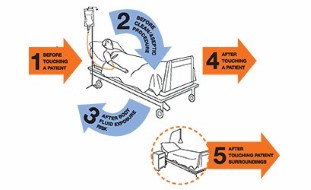Bloodstream infections
The use of central and peripheral venous catheters are commonly used in health care delivery worldwide. When these devices are used, there remains risks posed to patients for the development of bloodstream infections (BSI). In this course, you will learn more about these specific types of infections, recommended best practices for insertion, maintenance, and removal and ways to achieve effective implementation for prevention.
Please note: These materials were launched on 05/12/2022.
Peripheral and central venous catheters are commonly used in health care delivery worldwide. These devices increase a patient’s risk for developing bloodstream infections (BSIs) and other local infections in and around the insertion site. In this course, you will learn about case definitions of BSIs due to catheter use, its epidemiology and the risk factors for acquiring BSIs.
Learning objectives:
Course contents
Epidemiology & Risk Factors:
Peripheral and central venous catheters are commonly used in health care delivery worldwide. These devices increase a patient’s risk for developing bloodstream infections (BSIs) and other local infections in and around the insertion site. In this section, you will learn about case definitions of BSIs due to catheter use, its epidemiology and the risk factors for acquiring BSIs.
Prevention of Bloodstream Infections: Best Practices:
In this section, you will learn about recommended best practices for insertion, maintenance, and removal of peripheral venous catheters (PVC) and central venous catheters (CVC). The section will also cover strategies to achieve effective implementation for prevention of bloodstream infections (BSI).
User Reviews
Be the first to review “Bloodstream infections”
You must be logged in to post a review.








There are no reviews yet.